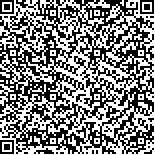| 摘要: |
| 采用廉价的乳糖替代IPTG诱导重组别藻蓝蛋白(rAPC)在大肠杆菌(Escherichia coli)JM109中表达,对诱导产物表达的培养基、培养条件、诱导剂的浓度和诱导时机进行了优化,将优化条件用于5L自控发酵罐进行高密度培养。结果表明,对rAPC表达的条件进行优化后,乳糖诱导rAPC的表达率可达26.8%,与IPTG的诱导结果接近;在高密度培养中, OD600最大达21.8。研究结果可为乳糖替代IPTG大规模生产rAPC奠定基础。 |
| 关键词: 重组别藻蓝蛋白 重组大肠杆菌 乳糖诱导 |
| DOI: |
| 分类号: |
| 基金项目:国家863计划资助项目,2001AA6204130号;中国科学院知识创新项目,KZCX3-SW-215号。 |
|
| EXPRESSION OF rAPC (RECOMBINANT ALLOPHYCOCYANIN) IN ESCHERICHIA COLI USING LACTOSE AS INDUCER |
|
TANG Zhi-Hong1,2, GE Bao-Sheng3, LIN Fan3, REN Yu-Hong4,5, QIN Song3
|
|
1.Experimental Marine Biology Laboratory,Institute of Oceanology,Chinese Academy of Sciences,Qingdao, 266071;2.Marine College,Yantai University,Yantai,264005;3.Experimental Marine Biology Laboratory,Institute of Oceanology, Chinese Academy of Sciences,Qingdao,266071;4.Experimental Marine Biology Laboratory,Institute of Oceanology,Chinese Academy of Sciences,Qingdao,266071;5.Department of Biochemistry,Yantai University,Yantai,264005
|
| Abstract: |
| Phycobiliprotein is a type of photosynthetic antenna pigment found in cyanobacteria, rhodophytes, cryptophytes and certain dinoflagellates. According to their visible absorption properties, the phycobiliprotein family can be classified into four subfamilies: phycoerythrocyanin, phycoerythrin, phycocyanin, and allophycocyanin. Phycobiliproteins have also been found to have anti-oxidative, anti-inflammatory, anti-tumor and cell-growth promoting activities. An APC (allophycocyanin) gene from cyanobacterium Anacystis nidulans UTEX625 was cloned, sequenced and expressed in Escherichia coli. Mouse efficacy study showed that rAPC could inhibit tumor remarkably. Isopropyl-β-D-thiogalactopyranoside (IPTG) is an effective inducer for lacpromoter derived expression systems. However, IPTG is toxic and comparably expensive, which is impracticable in large-scale production of genetically engineered drugs. To discover a low-cost technique for efficient production of rAPC, in this paper, the possibility of using lactose as an inducer to substitute IPTG in the expression of rAPC in E. coli JR1 was investigated. At first, the recombinant pMAL-p2-AP (7176kb) was transformed into E. coli JM109 (DE3). Western blot analysis revealed that the rAPC could be expressed successfully in the recombinant E. coli JR1. The growth of the recombinant E. coli and the expression of rAPC were significantly affected by cultivation media. Shake-flask cultivations in different media (LB, 2-YT, M9) showed that LB medium is the most appropriate for the production of rAPC with lactose as an inducer. The final cell density OD600 reached 4.08 and the expression of rAPC amount to 21.8% of the total protein in LB medium, which was much higher than those in 2-YT and M9. Mineral salt media is often used to improve growth and the stability of plasmid, therefore, shake-flask optimization experiments were performed with different combinations of mineral salt media. Relatively good growth of the recombinant E. coli was achieved by using phosphate (4–8g/L). The feeding strategy of inducer is important in the expression of recombinant protein. Experiments were conducted to find out the optimal conditions for induction time, inducer concentration, and total induction time of the expression of rAPC. The highest expression rate of rAPC was measured in the cultivations, induced when OD600 was about 0.8 (phase Ⅱ). The concentration of 0, 2, 4, 6, 8 and 10g/L lactose was selected separately to evaluate advantageous conditions for the induction. The concentration of lactose 6g/L resulted in higher production of rAPC. At 4h after the induction, the highest biomass of rAPC (0.23g/L) was achieved; while the OD600 did not increase after 5h induction. Therefore, the time of the expression of rAPC should be controlled at about the 5th h. Finally the recombinant E. coli JR1 was cultured in aNBS BioFlo3000 5L fermentor. The expression of rAPC reached 23%, being similar to that with IPTG, and the OD600 reached 20 in high cell density culture. The results suggested that rAPC could be expressed in E. coliJM109 (DE3) with lactose as a substitute inducer. The cultivation method by lactose induction can reduce the cost of the production of rAPC. |
| Key words: Recombinant allophycocyan in (rAPC), Recombinant Escherichia coli, Lactose induction |
